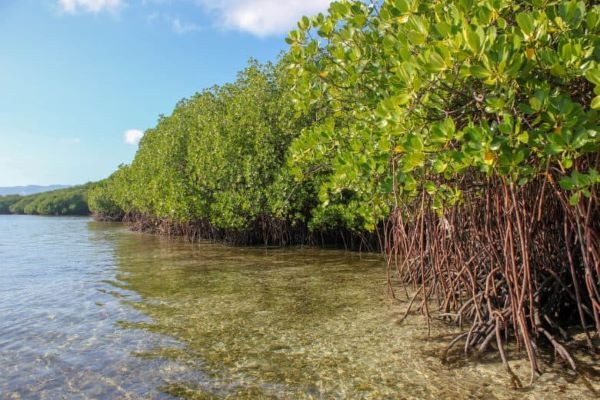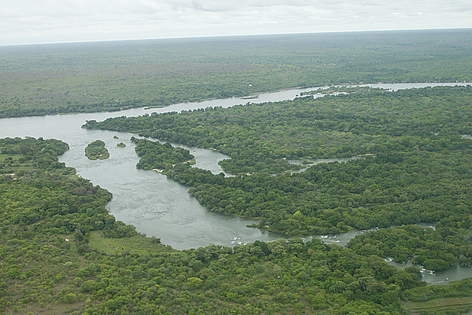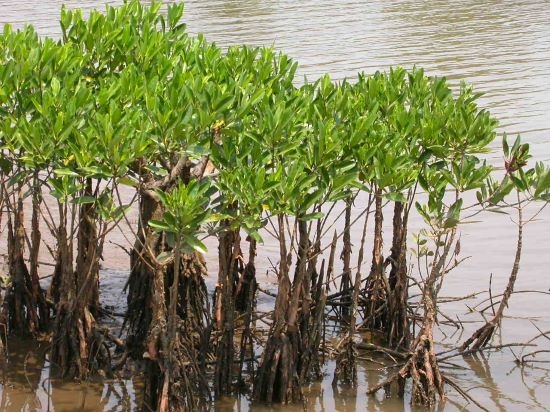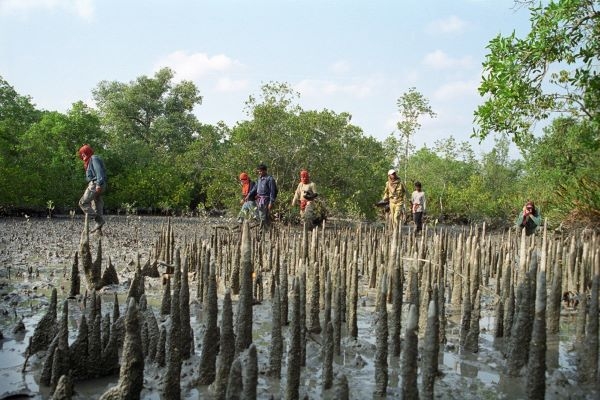World Mangrove Day: Let’s Come Forward to Conserve the ‘Kidneys of Oceans’
Total Views |
UNESCO, July 26: Mangroves, a precious ecosystem that exists on the meeting point of river and sea, is nicknamed as ‘Kidneys of Oceans’. As human kidney filters the blood, mangroves filter the water by absorbing solid material from the sea. Today is ‘World Mangrove Day’ – a day to pull the world’s attention to this immensely valuable ecosystem!

What are Mangroves?
Mangroves are shrubs or small trees that grow in coastal saline or brackish water and occur worldwide in the tropics and subtropics. they grow above the average mean sea level of an intertidal zone i.e. between low and high tide. Mangroves are salt-tolerant trees, also called halophytes. All mangroves have evolved special adaptations that enable them to live in salty, oxygen-poor soil. Scientists have yet discovered over 80 species that include mangroves and mangrove-associates.
Mangroves are mostly distributed over 123 countries and territories in the tropical and subtropical region of the world. Asia has the largest amount of the world’s mangrove. The total mangrove cover in the world is 1,50,000 sq.km.
In India. Mangroves are spread over an area of 4921 sq. Km. which is nearly 3.3% of the world’s mangrove vegetation. Sundarbans in West Bengal accounts for nearly half of the total area under mangrove in India.

Importance of Mangroves:
Mangroves, known as the ‘kidneys of our coast’, are an important habitat because of the role they play in nutrient cycling within our coastal environment. Many of the animals that live in mangroves, such as crabs, feed on dead or decaying matter. The nutrients are then returned to a form that organisms higher in the food chain, such as fish or humans, can use. Up to 70 per cent of the seafood we eat is dependent on the mangrove environment for at least part of its lifecycle.
Mangroves are warriors that play a valuable role in foreshore protection. Their extensive root systems assist in maintaining shoreline stability. During storms, mangrove forests can reduce the rate of erosion and the impact of storm waves and surge by absorbing wave energy. The protective role of mangroves has been widely recognized especially after the deadly Tsunami of 2004. Mangroves are an important source of blue carbon.

Threats and Conservation:
The effects of human activities on mangroves have far exceeded those of natural events over the past few decades. Economic development, rapid population growth and high population densities in coastal areas are the main drivers for mangrove degradation and loss. A 2001 study estimated that about 38% of global mangrove loss can be attributed to the clearing of mangroves for shrimp culture.
Many mangrove habitats have been lost globally because of direct conversion to urban and industrial spaces, aquaculture ponds, residential areas, ports, marinas, tourist resorts, and agricultural land.
Pollutants from agricultural and urban runoff, sewage, industrial waste and oil spills, often end up in mangrove forests either directly or indirectly. Mangroves can survive significant levels of pol-lution that would be detrimental to more sensitive ecosystems like coral reefs, but high nutrient levels, pesticides, and other toxic man-made chemicals can kill animals living in mangrove forests, while oil pollution can smother mangrove roots and suffocate trees.
An appropriate management of mangrove ecosystem is required for their conservation for environment benefits as well as supplying forest products on a sustainable basis to meet day to day requirement of local people.

Sundarbans mangroves located in Bay of Bengal were the first mangroves in the world, which were considered under scientific management since 1892. Observing the importance of mangroves, Govt. of India set up a National Mangrove Committee in 1976. Different states in India are carrying out practices of conservation of mangrove cover with the active involvement of local communities. In States like Andhra Pradesh, Gujarat, Maharashtra, Odisha and West Bengal, have shown an increase in mangrove cover over the last few years due to plantation and regeneration.
In Kenya, Local Communities are conserving mangrove forest through the sale of carbon credits. Here is the detailed report by UN.